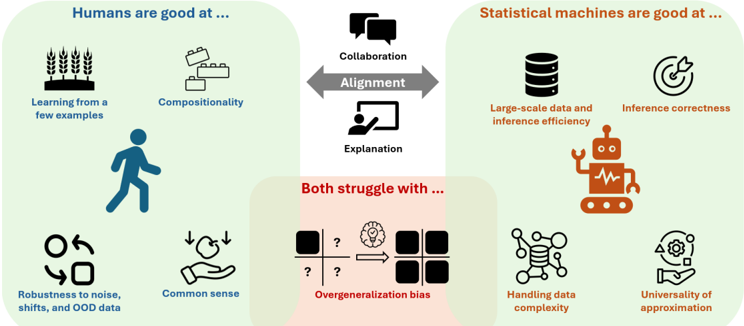
The text states that 'humans excel at generalising from a few examples, compositionality, and robust generalisation to noise, shifts, and Out-Of-Distribution (OOD) data'[1]. This highlights human proficiency in few-shot learning, where they can effectively apply knowledge from limited data points.
In contrast, while statistical learning methods in AI, such as those employing few-shot mechanisms, aim to mimic some aspects of human learning, they typically require far more extensive datasets to achieve similar effectiveness and do not generalise as reliably to new tasks or domains[1].
Sign Up To Try Advanced Features
Get more accurate answers with Super Pandi, upload files, personalized discovery feed, save searches and contribute to the PandiPedia.
Sorry, Pandi could not find an answer.
Let's look at alternatives:
- Modify the query.
- Start a new thread.
- Remove sources (if manually added).